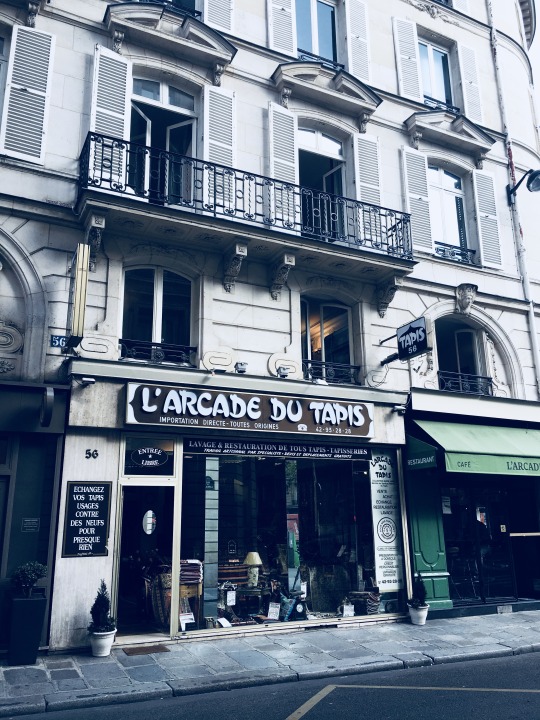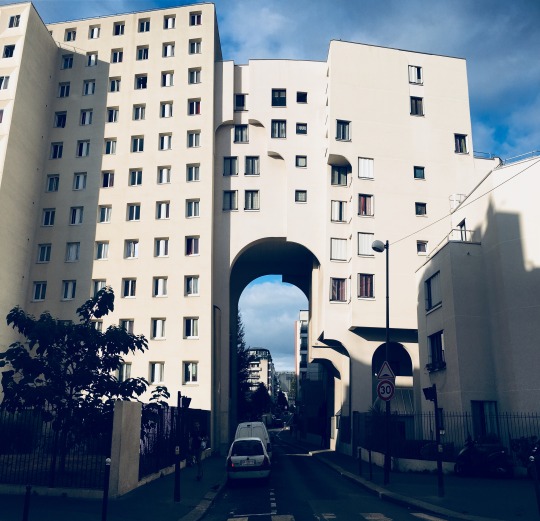Text
home
My mom gave me a necklace as a gift when I moved to DC. It has a cerulean blue compass on one side, and a quote by Colby Davis on the other: “Life brings us to unexpected places; love brings us home.” The concept of “home” has grown so ambiguous that not a single written definition is satisfactory, but you know how it feels when you’re there. Some might say it’s a gut thing.
Our flight’s landing at CDG on August 25th was interesting. The left and right sets of wheels didn’t land squarely on the runway, so the plane (a Boeing 747, mind you) teetered from side to side before eventually leveling out. Can I coerce a metaphor out of this random, meaningless circumstance? Though I thought I “got” Paris after studying here three years ago, it turned out that none of that mattered much. Despite feeling prepared -- armed, even -- with my cultural, linguistic, and geospatial understanding, I still sort of stumbled on in and arrived as awed as ever. The city I thought I at least decently understood fell upon completely fresh and naive eyes once again. I guess I shouldn’t have been surprised. What surprised me more, though, was that familiar home feeling -- unique to each of us -- that I felt when walking up the jet bridge.
I’m here conducting an architectural research fellowship. My direction has shifted, but here’s a brief summary of what sparked my interest. It was actually a French-American military engineer, Pierre l’Enfant, who served as the primary Washington, D.C. city planner. L’Enfant initially came to the United States to serve in the American Revolutionary War and later saw an opportunity in the nation’s imminent need for a carefully planned capital. Upon receiving George Washington’s blessing, l’Enfant designed a city that incorporated both his interpretation of the U.S. administration’s vision for the country and the wealth of inspiration he drew from the work of André Le Nôtre, a revered French architect best known for his landscape architectural designs at Versailles. Le Nôtre’s work encapsulates the classic French garden and likely served as l’Enfant’s greatest influence in his urban planning process based on the clear similarities we are able to observe between Le Nôtre’s work in France and L’Enfant’s work in Washington.
One of my objectives is to take a deep dive into these similarities, and more importantly, explore (and possibly attest to) both their architectural and diplomatic significance. Though France and the United States would go on to share a solid diplomatic relationship, these bilateral roots were only starting to take at this point in history. Another one of my objectives is to consider the value of two concepts under juxtaposition: (a), sustainable architecture, and (b), cultural heritage preservation, pertaining specifically to historically noteworthy structures.
While I plan to share more than just my fellowship work (including photos - a small handful thrown in at the bottom), the following text is part of what I have pulled together so far. (Working bibliography will be posted separately.)
The majority of multi-story buildings and homes that occupy our American cities and suburbs today consume enormous amounts of resources, and understandably so. Most edifices are constructed with one set of interests in mind: the needs, desires, and overall comfort of the customers, users, or occupants. It wasn’t until after WWII that the ramifications of environmental negligence surfaced ever so slightly in the consciousness of the American public, and despite the progress in environmentalism over the last few decades, the practice of architecture is still rooted in, among other principles, catering to the interests of the anticipated end users of any given space.
This in and of itself is not an entirely negative thing. Buildings or homes designed without the customer in mind would be of little use to anyone, and would ultimately result in environmental damage anyway, requiring resources for edification but gradually decaying over time in vacancy. As we experience the impacts of humankind’s dereliction of environmental duty more viscerally with each passing year, however, the obligation to change the way we design and build is now not only imperative -- it’s non-negotiable. Renewable energy-powered structures, built from ethically-sourced and sustainable materials, complete with intuitive measures of both waste reduction and efficient resource consumption -- these structures will, more than likely and before long, become the gold architectural standard, for perhaps no reason other than pure urgency.
While this may at first glance seem like a dismal set of circumstances, I don’t think sustainable structures and aesthetically pleasing structures need to be mutually exclusive, and I’m hardly the first to suggest that. Creativity doesn’t need to be stifled by the necessity of environmental consciousness. In this multifaceted profession, requiring proficiencies in technology, engineering, and design, creativity is paramount. It’s an art, after all, and green buildings can be both truly green and (subjectively) stunning. Singapore’s SkyHabitat residential complex and anticipated Ecological EDITT Tower both immediately come to mind, as does the Off-Grid Guest House on the California coast. While these contemporary designs evoke a unique response from us as observers, probably one far different from what we experience when observing Romanesque churches or American Colonial homes, environmentalism and modernism go hand-in-hand.
Paris, France, as the birthplace of Gothic architecture, boasts a wealth of structures erected centuries ago in this very style, prevailing still, alongside Gallo-Roman, Romanesque, Baroque, Neoclassical, Neo-Gothic, and Belle-Epoque style works. The relatively few contemporary structures in Paris today -- including Tour Montparnasse, Philharmonie de Paris, Centre Georges Pompidou, and the Ministry of Culture and Communication -- contrast, somewhat controversially, with the trademark Georges-Eugene Haussmann-inspired appearance both locals and tourists can anticipate around just about every corner.
During the mid-1800s, French Emperor Napoleon III commissioned Haussmann, a prefect at the time, to carry out an urban renovation program. Several major works that form the foundation of Paris as a unique and traversable city resulted from this program. The same architectural clues present today that let you know you’re in Paris were part of Haussmann’s original vision and designs. Place du Trocadero, Place de la Republique, l’Etoile, Pont Saint-Michel, and l’Opera all came forth over the course of the renovation, as well as the Haussmann-style buildings lining the streets, and countless boulevards connecting a number of major landmarks. Haussmann was harshly criticized for his grotesque financial imprudence and poor urban planning, but the city would not look or feel like it has for nearly a century, and little opposition to that notion exists.
Of course, sustainability was not an architectural consideration -- or even a coined term -- during 19th century. Aesthetic superiority even triumphed over functionality in many cases. Setting aside the squares, monuments, parks, and gardens for a moment, let’s exclusively consider the five- to six-story apartment buildings that one might argue make Paris Paris. Though resource-intensive and environmentally unsavvy, these buildings are representative of the City of Light -- and, not to mention, home to more than two million Parisians. Paris is certainly not the only city overwhelmingly constituted of buildings that are simultaneously culturally emblematic and environmentally inefficient.
How do we harmonize these two competing certainties? That the Haussmann-style apartment building isn’t going anywhere, and neither is the urgency of reducing the environmental footprint left behind by our existing and future buildings of all kinds? How do we reconcile two moral demands of society that are seemingly diametrically opposed: preserving cultural heritage as it pertains to architecture, and significantly adapting our constructions in a global effort to reduce their impact on the planet?
More to follow...

Yelp says this rug arcade is the place for magic carpet rides.

Oh, good! I’ve been meaning to catch up on my news.

I’m missing the point here.

Speaking of city planning...

“Noo” is the new “New.”

What’s the saying? Humans plan, and god laughs.
0 notes